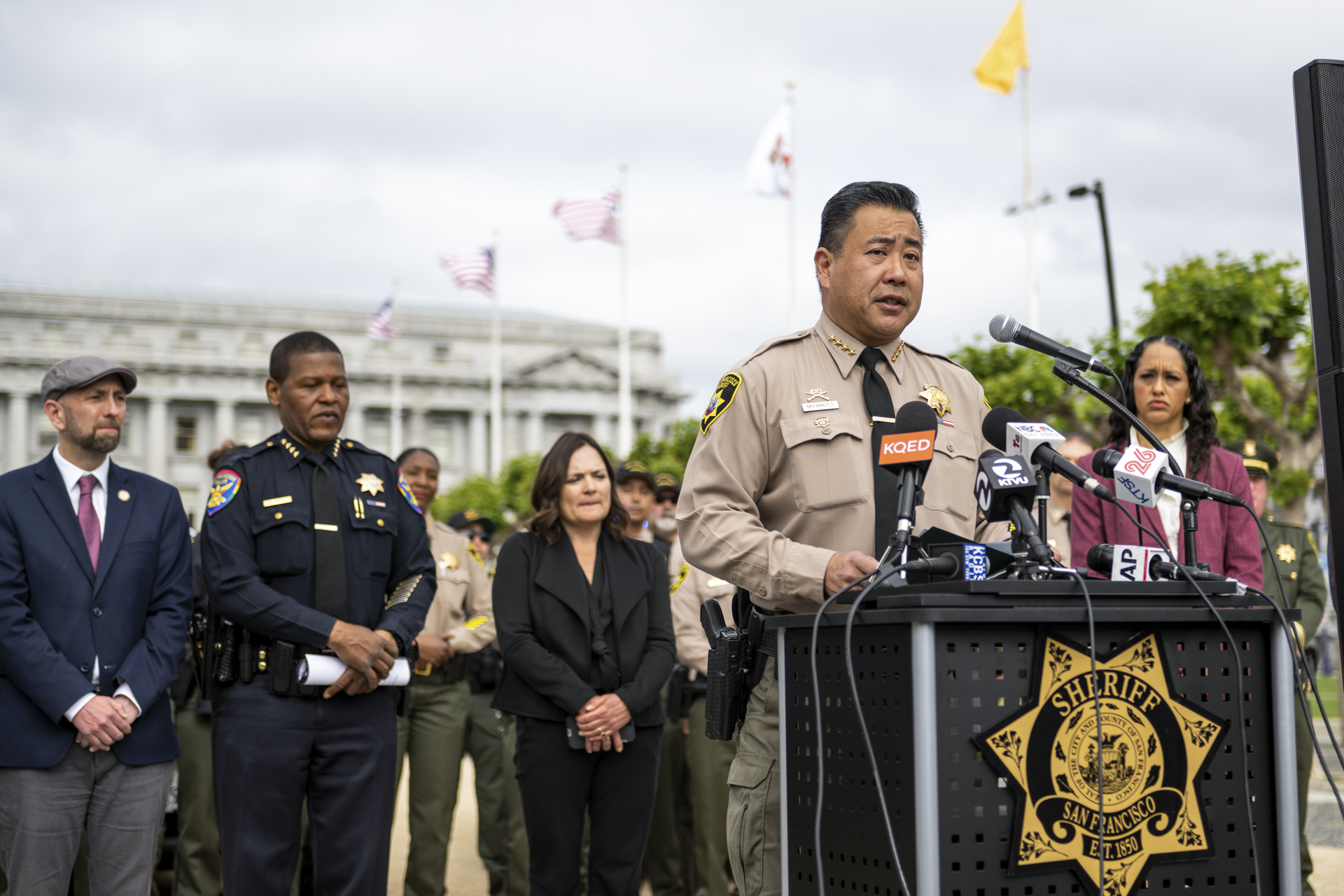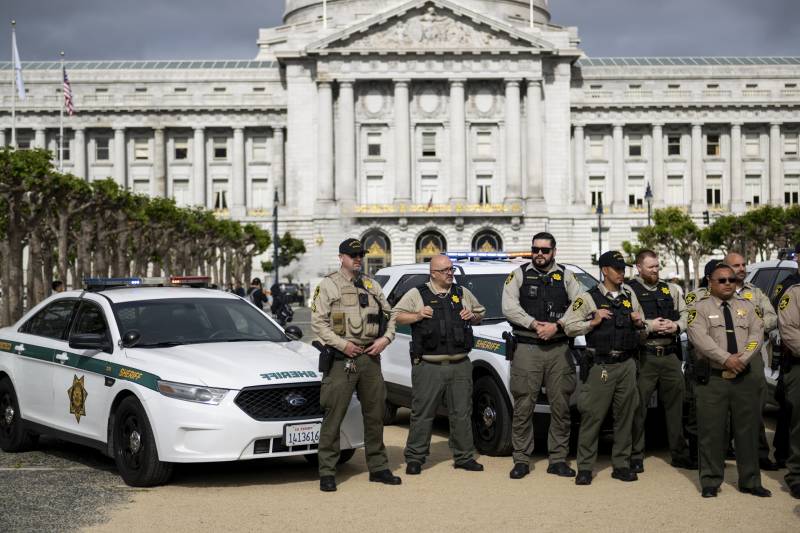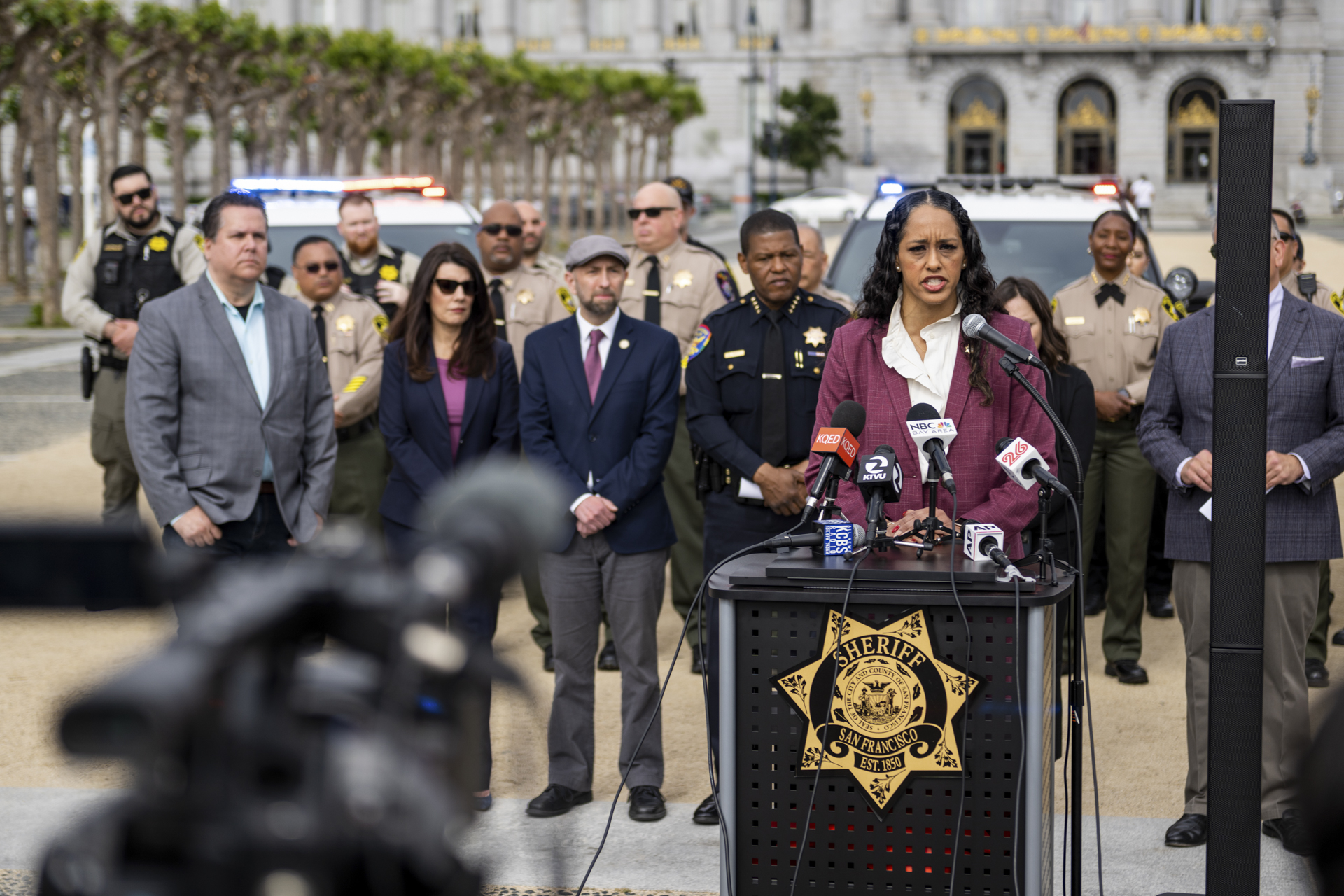The San Francisco Sheriff’s Office is tasking its emergency unit with arresting and compelling treatment for people who use drugs or are intoxicated in public, city leaders announced Thursday.
The plan comes shortly after Mayor London Breed last month told the Board of Supervisors that “force” needs to be part of the city’s response to drug use. The sheriff’s plan includes deploying 130 additional deputies to the Tenderloin and South of Market neighborhoods, two areas where drug use, sales and overdoses are concentrated in the city.
The deputies will work overtime for a six-month deployment beginning this month.
“In many cases, individuals suffering from drug addiction only seek help when they hit their lowest point, and the sad truth for many is that the low point is incarceration,” Sheriff Paul Miyamoto said at a press conference Thursday morning outside City Hall.
The Emergency Services Unit at the sheriff’s office will work with the Mayor’s Office to increase arrests for drug sellers as well as people using drugs outdoors and in public settings, particularly those who are deemed to pose a threat to themselves or others.

Law enforcement including the San Francisco Police Department, the California Highway Patrol and the National Guard in recent months have renewed focus on the Tenderloin and SoMa, two areas that have become central to ongoing debates over how to respond to challenges around outdoor drug use and sales, homelessness and substance use disorders.


